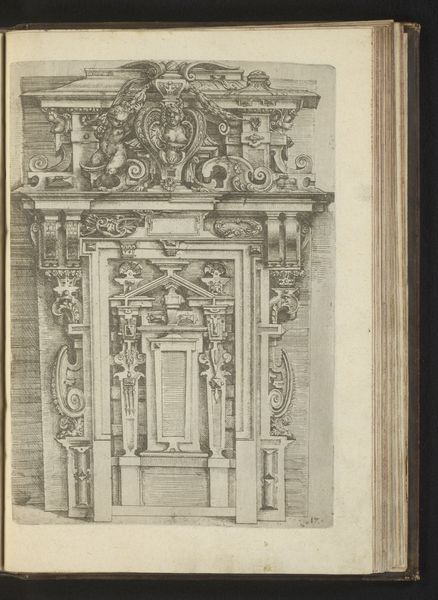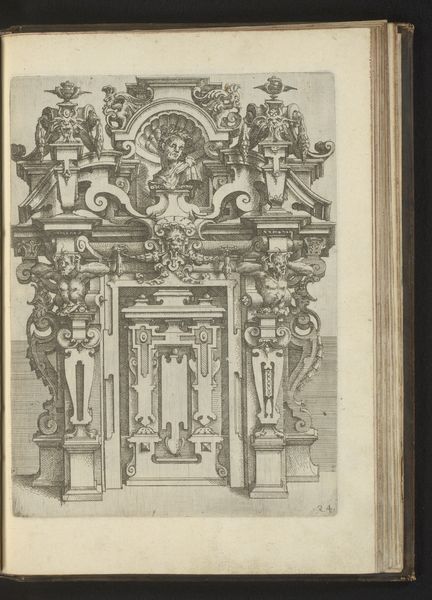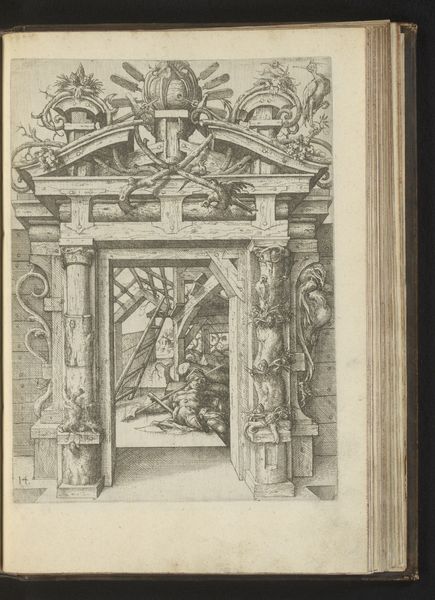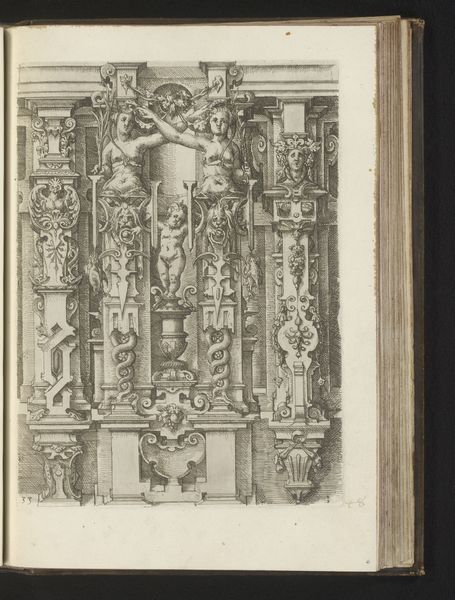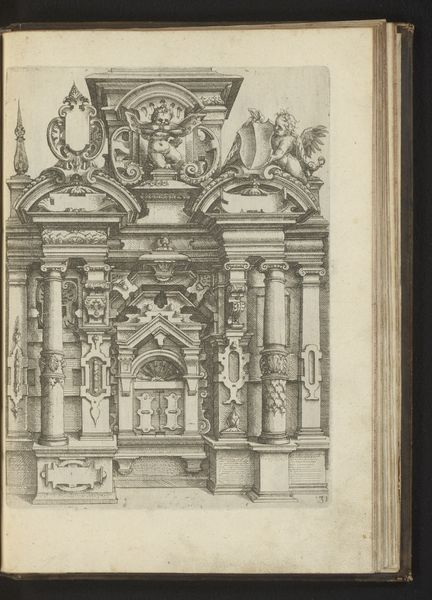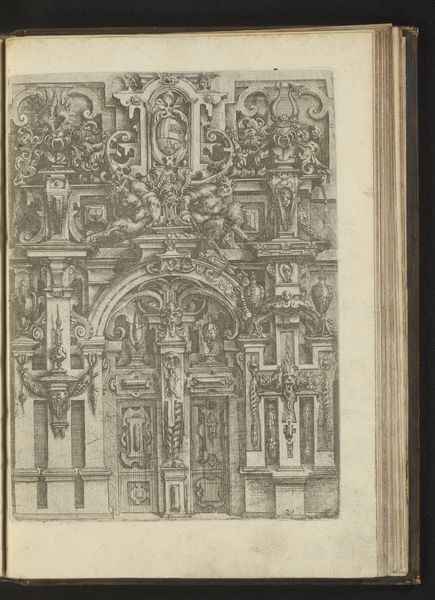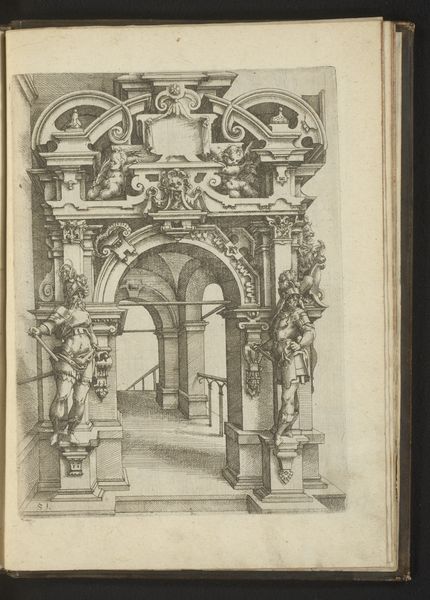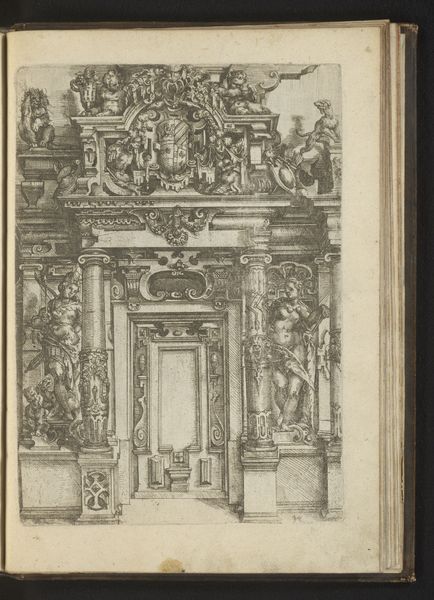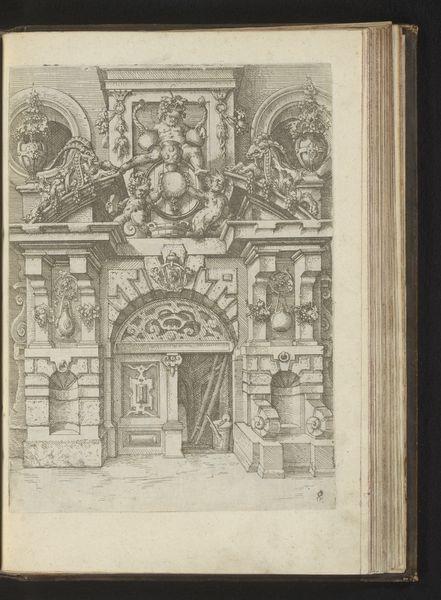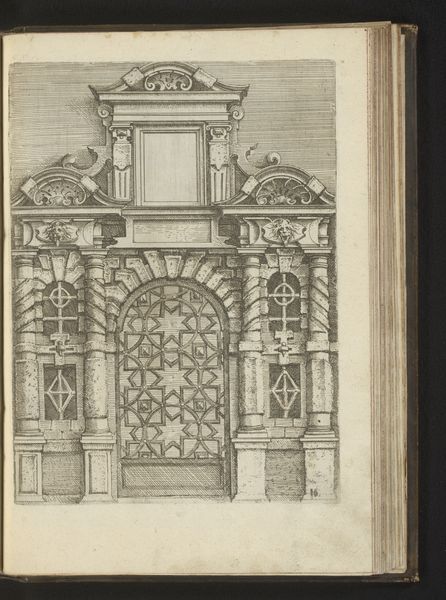
Gelede wand met poortvormige muurdecoratie en pilasters met rustica, decoratie van rolwerk, een mascaron en een cartouche 1593 - 1595
0:00
0:00
drawing, print, paper, ink, pen, architecture
#
drawing
#
aged paper
#
toned paper
#
mechanical pen drawing
# print
#
pen sketch
#
sketch book
#
paper
#
form
#
11_renaissance
#
personal sketchbook
#
ink
#
geometric
#
pen-ink sketch
#
line
#
pen work
#
sketchbook drawing
#
pen
#
northern-renaissance
#
sketchbook art
#
architecture
Dimensions: height 249 mm, width 187 mm
Copyright: Rijks Museum: Open Domain
Curator: Immediately, the eye struggles to find a place to rest in this visual cacophony. Editor: Indeed! Let’s unravel this complex drawing. This is "Gelede wand met poortvormige muurdecoratie en pilasters met rustica, decoratie van rolwerk, een mascaron en een cartouche," created between 1593 and 1595 by Wendel Dietterlin. The medium is pen and ink on paper. Curator: Right, it’s almost aggressively ornate. The architectural elements are fighting for space. The Northern Renaissance loved this sort of thing, didn't they? The more complex, the better. Do you see it as I do, where it's so overwrought it begins to almost hint at some kind of cultural anxiety? Editor: Precisely. Consider the pilasters with rustication: the rough, unfinished stonework evoking antiquity but also strength. It’s a foundation on which all that rollicking, scrolling ornamentation is placed. The juxtaposition becomes meaningful— a statement of grounding historical influence struggling to bear the weight of fanciful artifice. Curator: And the mascaron! A grotesque face, meant to ward off evil spirits, but here it just adds to the overwhelming visual noise. Is it a protective symbol gone berserk? This page pulses with layers upon layers. I wonder if this relates to larger issues around social protection during this time of exploration. Editor: Perhaps, and then note how it's situated in the page—deliberately foreshortened, slightly cramped, as if squeezed onto the paper, confined to fit within the book. Curator: Good eye. That restriction impacts the experience. We aren't invited into the scene. Rather, the effect mirrors psychological claustrophobia – anxieties about place, space, and meaning that the symbolism exacerbates. Editor: It's fascinating to witness these symbols clashing within this relatively contained and aged framework. Dietterlin really seems to capture the tensions within the late Renaissance itself. Curator: A tense time in art, captured through the bold flourishes of ink. There is certainly something special on display with this study.
Comments
No comments
Be the first to comment and join the conversation on the ultimate creative platform.
